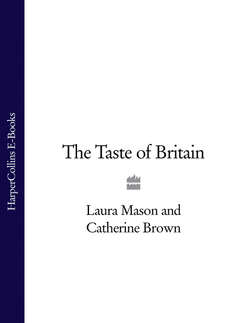Читать книгу The Taste of Britain - Hugh Fearnley-Whittingstall - Страница 5
ОглавлениеIn 1994 we embarked on a mission to describe as many British foods with regional affiliations as we could find. We were part of a Europe-wide project working within a framework - handed down from Brussels - which demanded a link to the terroir (soil). In fact the project, named Euroterroir, was more suited to rural southern Europe than industrialized, urbanized Britain. How do you link Yorkshire Relish to the soil? But ultimately we succeeded in writing up some four hundred British entries. And along the way we asked some broader questions - what are our traditional foods? What is the character of British taste?
We’ve discovered that many rural treasures had survived against the odds. That sometimes foods with traditional or regional affiliations languished unloved. That sometimes British foods, though not always linking directly to the terroir, did have other powerful historical influences which made them special, and distinct, from the rest of Europe. No other country in Europe has a history of spicing to match the British.
Yet our homogenized food supply was clearly inflicting a far-reaching loss of local distinctiveness and quality. The idea, inherent in the project, that foods should be the property of a place and its community (terroir, in the context of food in France, carries implications of regionality, cultural groupings and the influence of trade and climate), rather than the trade-marked possession of an individual or company, was especially alien.
Our initial research complete, we felt confident that either the Ministry of Agriculture or Food from Britain would take up the cause and publish a book based on the work which had taken us two years to complete. Instead, it was a small publisher in Devon (Tom Jaine of Prospect Books) who kept the flag flying and Traditional Foods of Britain was published in 1999. Seven years on, we welcome this new publication by HarperCollins.
We also welcome signs of change. Now, there is more awareness of commercial dilution, and dishonest imitation and therefore the need to protect food names, though the application process for producers is slow and difficult. There are certainly more small producers working locally, but they have to cope with numerous barriers. However much they protest otherwise, powerful supermarket central distribution systems and cut-throat pricing polices are not designed to foster local produce. And consumers do not always pause to consider the more subtle and elusive nuances of foods from closer to home.
Of course the ties of regionality do not suit foodstuffs, and in any case should be just one of many avenues open to British farmers and food producers. But it would be good to see more raw local ingredients transformed into distinctive foods since records show their rich variety in the past. Shops and markets bursting with colourful and varied local produce are one of the great pleasures of shopping for food on the continent. They exist because national policies and local custom support them. They should not be impossible in Britain. This book is not an end, but a beginning.
Laura Mason and Catherine Brown 2006
Regions
1 South West England
2 Channel Islands
3 South England
4 South East England
5 East Anglia
6 East Midlands
7 West Midlands
8 Wales
9 Isle of Man
10 North West England
11 North England
12 North East England
13 Scotland
14 North Scotland
